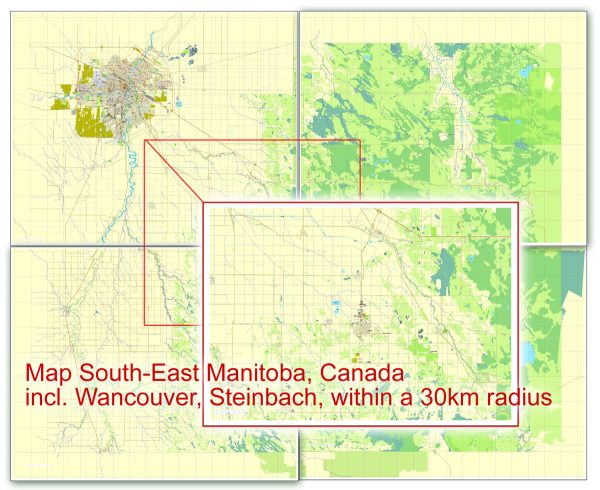Winnipeg and Steinbach are both located in the province of Manitoba, Canada. While Winnipeg is the capital and largest city of the province, Steinbach is a smaller city located to the southeast of Winnipeg. Both cities are situated in the Canadian Prairies, and they have distinct ecological characteristics:
Winnipeg:
- Climate: Winnipeg experiences a continental climate with cold, snowy winters and warm summers. The city is known for its cold temperatures during the winter months, which can drop significantly below freezing.
- Vegetation: The natural vegetation in the Winnipeg area includes prairies, forests, wetlands, and grasslands. However, the urban environment has largely replaced the natural vegetation, with parks and green spaces providing some relief.
- Biodiversity: Winnipeg is home to a variety of wildlife species, including birds, small mammals, and insects. The city is situated along the migratory path for many bird species, making it a popular spot for birdwatching.
- Rivers and Waterways: Winnipeg is located at the confluence of the Red and Assiniboine Rivers, which has influenced the city’s development. These rivers and the associated waterways play a significant role in the city’s ecology.
Steinbach:
- Climate: Steinbach, being relatively close to Winnipeg, shares a similar continental climate with cold winters and warm summers. The region experiences a distinct change of seasons.
- Agriculture: Steinbach and the surrounding area are known for their agricultural activities. The fertile soils of the region support the growth of various crops, including canola, wheat, barley, and soybeans.
- Wetlands: This area also features wetlands, which are important ecologically for water filtration, wildlife habitat, and biodiversity. Many bird species and other wildlife can be found in and around these wetlands.
- Grasslands: The natural landscape in this region consists of mixed-grass prairies, which have been significantly altered due to agricultural development. These grasslands are home to various plant and animal species.
Both Winnipeg and Steinbach are in proximity to various lakes, rivers, and natural areas, providing opportunities for outdoor recreation and wildlife observation. It’s important to note that urbanization and agriculture have significantly impacted the natural ecology of these areas, but efforts are made to preserve and restore local ecosystems where possible.


 Author: Kirill Shrayber, Ph.D.
Author: Kirill Shrayber, Ph.D.